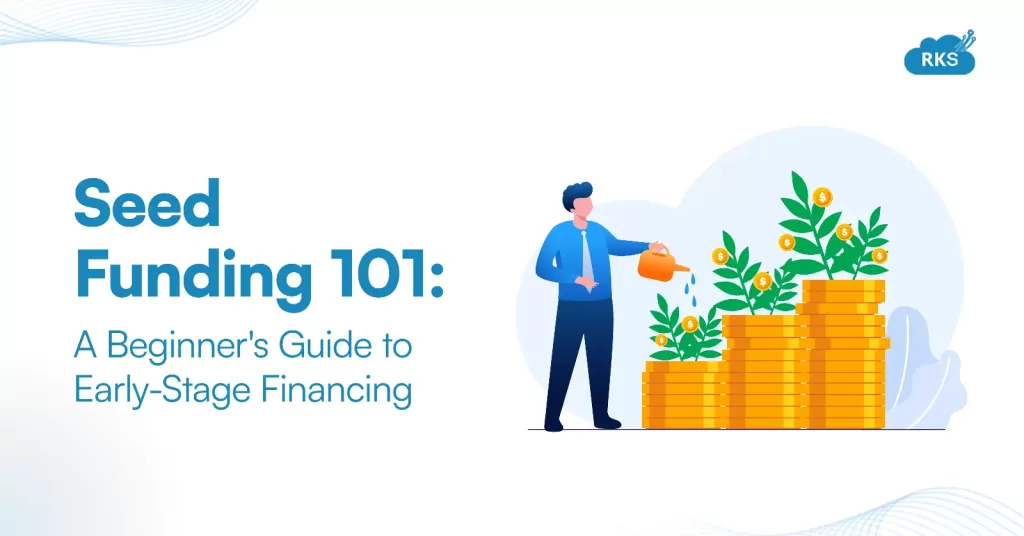
Securing seed funding is a critical milestone for startups, providing the necessary capital to transform an idea into a viable business. In 2024, the funding landscape is dynamic, with evolving trends and strategies. Knowclick Media will walk you through the steps to secure seed funding, offering practical advice and insights to help your startup succeed.
The Importance of Seed Funding
Seed funding is the initial capital used to launch a startup. It helps cover early expenses such as product development, market research, and building a team. Securing seed funding is crucial for validating your business idea, creating a minimum viable product (MVP), and attracting further investment.

Understanding the 2024 Seed Funding Landscape
- Technological Innovations: Investors are keen on startups leveraging AI, blockchain, and fintech to solve problems.
- Micro-VCs and Angel Networks: These are becoming more prominent, offering startups more access to early-stage funding.
- Alternative Funding Sources: Crowdfunding, government grants, and corporate venture arms are increasingly popular.
Key Strategies for Securing Seed Funding in 2024
1. Crafting a Compelling Pitch
A strong pitch is essential. Clearly articulate the problem, your solution, market opportunity, business model, and traction. Use storytelling to make your pitch engaging.
2. Building a Strong Team
Investors invest in people. Highlight your team’s expertise, experience, and ability to execute the business plan.
3. Demonstrating Traction
Show early traction through user growth, revenue, partnerships, or product milestones. Use data to build credibility.
4. Leveraging Networks
Attend industry events, join incubators and accelerators, and seek mentorship. Networking can lead to warm introductions to investors.
5. Exploring Alternative Funding Sources
Consider crowdfunding, government grants, and corporate venture capital to diversify your funding sources.

Step-by-Step Guide to Securing Seed Funding
Step 1: Conduct Thorough Market Research
Understand your market, target audience, competitors, and potential market size. This knowledge helps in building a better product and demonstrating to investors your market expertise.
Step 2: Develop a Solid Business Plan
Your business plan should include your business model, revenue streams, go-to-market strategy, and financial projections. This shows investors you have a clear vision and a plan to achieve your goals.
Step 3: Build an MVP
An MVP allows you to test your idea in the market with minimal resources. It helps you gather user feedback, validate your concept, and make necessary improvements. Investors prefer startups with a working product and initial user feedback.
Step 4: Create a Pitch Deck
Your pitch deck should be concise, visually appealing, and include key information like the problem, solution, market opportunity, business model, traction, team, and financial projections. A well-designed pitch deck captures investors’ attention and conveys your startup’s potential effectively.
Step 5: Practice Your Pitch
Practice delivering your pitch with clarity, confidence, and enthusiasm. Prepare thoughtful answers to potential questions. Practicing your pitch helps you make a strong impression during investor meetings.
Step 6: Identify and Research Potential Investors
List potential investors who invest in startups within your industry and stage. Research their investment criteria, portfolio companies, and preferred contact methods. Tailor your pitch to align with their interests and demonstrate why your startup is a good fit for their portfolio.
Step 7: Reach Out and Network
Use your network for warm introductions to potential investors. Attend startup events, pitch competitions, and industry conferences to meet investors in person. Building relationships with investors increases your chances of securing funding.
Step 8: Negotiate Terms and Close the Deal
Negotiate the investment terms, including your startup’s valuation, the equity you’re willing to give up, and any specific investor rights or preferences. Seek legal advice to ensure fair terms and protect your interests.

Detailed Strategies for Crafting a Compelling Pitch
- Clear Problem Statement: Begin with a clear and relatable problem statement. Explain why this problem matters and who it affects.
- Unique Solution: Describe your unique solution and how it effectively addresses the problem. Highlight what sets your solution apart from existing ones.
- Market Opportunity: Provide data on the market size and growth potential. Show that there is a significant and growing market for your product or service.
- Business Model: Explain your business model and how you plan to make money. Include revenue streams, pricing strategy, and sales channels.
- Traction and Milestones: Share key milestones achieved so far, such as user acquisition, revenue, partnerships, or product development. Use metrics to demonstrate your progress.
- Team Expertise: Highlight the strengths and experience of your team. Emphasize how their expertise is crucial to the success of the startup.
- Financial Projections: Present realistic financial projections, including revenue forecasts, expenses, and funding requirements. Show how the seed funding will be used to achieve specific milestones.
- Ask and Investment Terms: Clearly state how much funding you are seeking and what you are offering in return (equity stake). Be transparent about how the funds will be utilized.
Leveraging Alternative Funding Sources
Crowdfunding
Crowdfunding platforms like Kickstarter, Indiegogo, and GoFundMe allow startups to raise small amounts of money from a large number of people. To succeed in crowdfunding:
- Create a compelling campaign story and video.
- Offer attractive rewards or incentives to backers.
- Promote your campaign through social media and email marketing.
Government Grants
Many governments offer grants and subsidies to support innovation and entrepreneurship. Research available grants in your region and industry. Ensure your application is thorough and aligns with the grant criteria.
Corporate Venture Capital
Large corporations often invest in startups to gain access to new technologies and markets. Identify corporations in your industry with venture arms. Approach them with a tailored pitch highlighting how your startup can complement their strategic goals.
Building and Leveraging Networks
Attend Industry Events
Participate in conferences, trade shows, and networking events related to your industry. These events provide opportunities to meet potential investors, partners, and mentors.
Join Incubators and Accelerators
Incubators and accelerators offer resources, mentorship, and access to investor networks. Apply to programs that align with your startup’s goals and industry.
Seek Mentorship
Find experienced entrepreneurs and industry experts who can provide guidance and introductions to potential investors. Mentors can offer valuable insights and help navigate the fundraising process.
Also Read: Infrastructure Bonds
Securing seed funding in 2024 requires a strategic approach, a compelling pitch, and the ability to demonstrate traction and potential. By understanding the current funding landscape, leveraging networks, and exploring diverse funding sources, you can increase your chances of successfully raising the capital needed to bring your startup vision to life.
Remember, the journey to securing seed funding is challenging but achievable with the right preparation, persistence, and mindset. Stay focused, adapt to feedback, and keep refining your approach until you find the right investors who believe in your vision. Good luck!





